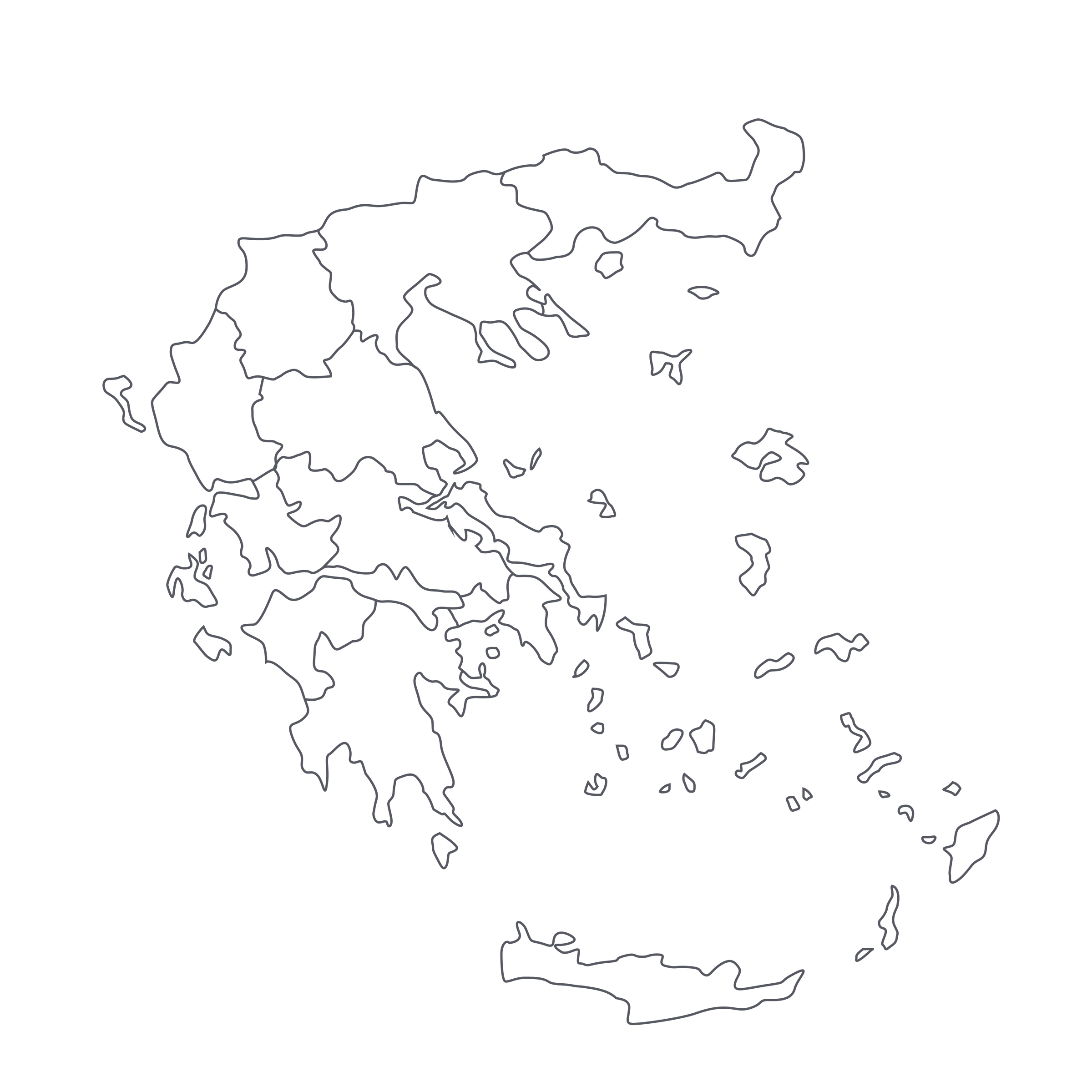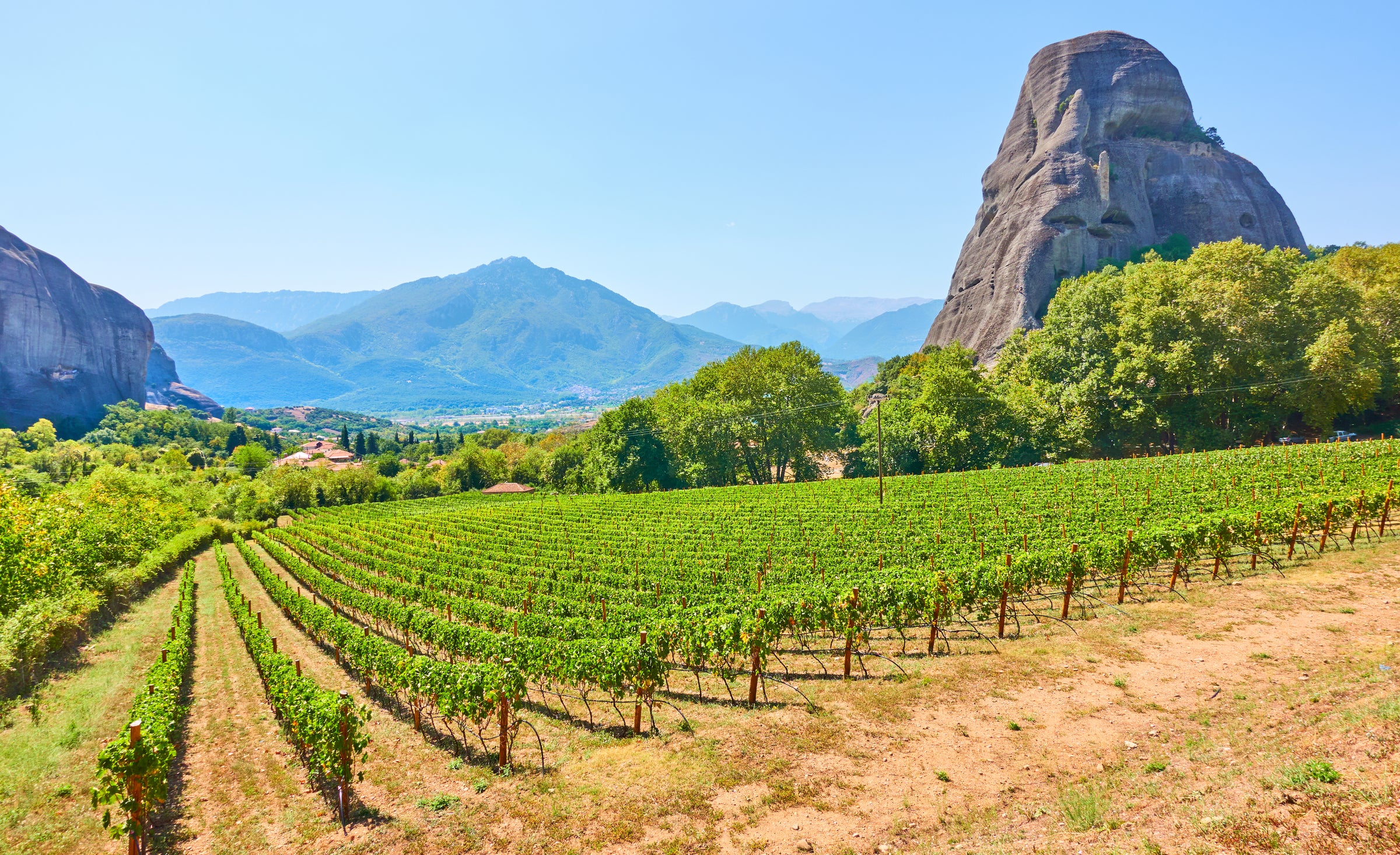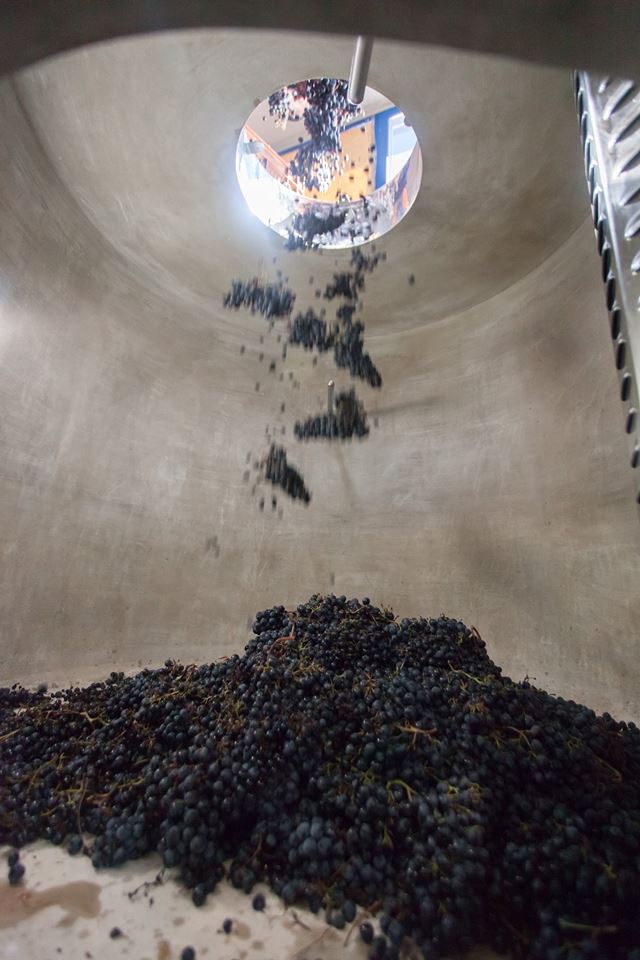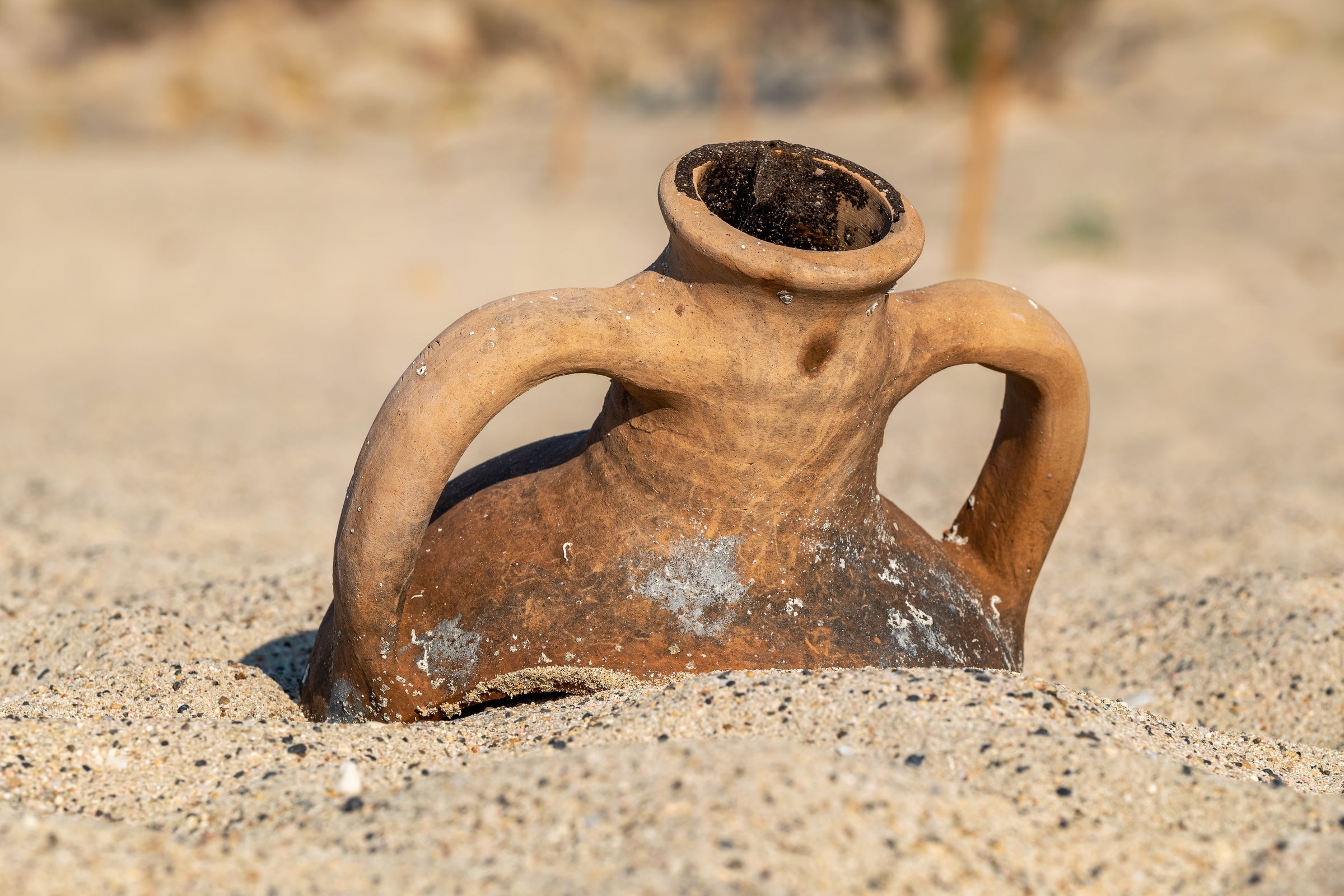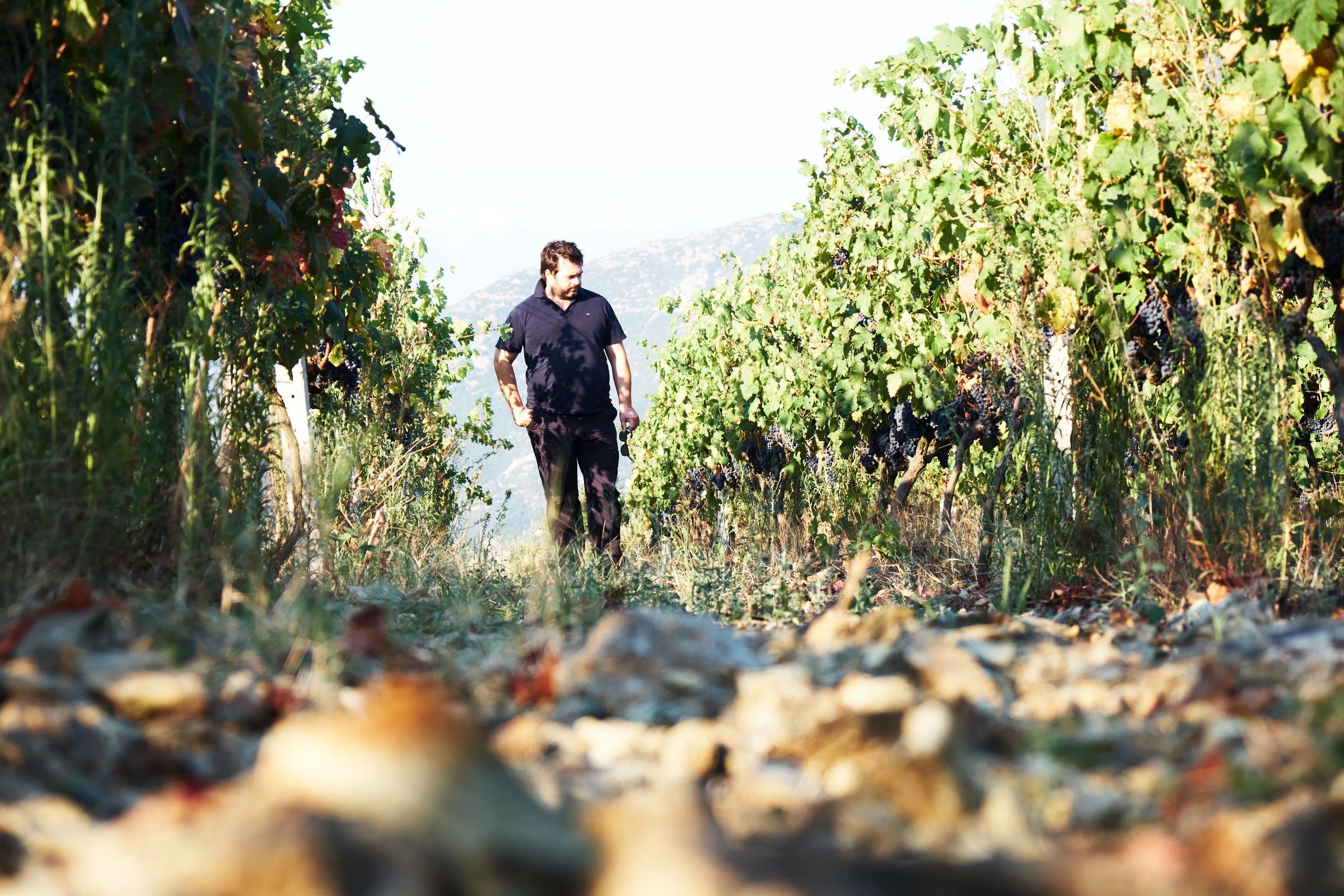Although Greece is one of the world’s most ancient wine cultures, its modern-day output is relatively small, so it is often referred to as an “emerging” wine market. It’s crazy to me that we’re still “discovering” Greek wine after all these millennia, but that’s the reality. Nevertheless, serious white wine lovers (like us) have embraced the salty deliciousness of Assyrtiko from Santorini, and if there’s a Greek red poised to truly blow up on the world stage, it’s Xinomavro (ksee-NOH-mah-vro) from the mountainous northern region of Macedonia.
While grown in several PDOs (Protected Denominations of Origins) across northern Greece, the region most sommeliers are fixated on is Naoussa, in the southeastern foothills of the Vermio Mountains. We’ve offered several excellent Naoussa wines here on SommSelect, but today’s 2020 from Diamantakos was a total game-changer. We were all completely transfixed by it, and, speaking as the one who got to take our sample bottle home, I can confirm it only got better over two days open. Naoussa is often referred to as the “Barolo of Greece,” and while Diamantakos’ does indeed give a hat-tip to Barolo’s Nebbiolo grape, it seems to have its sights set more squarely on blue-chip red Burgundies from villages like Vosne-Romanée and Chambolle-Musigny. I say this because we evaluated it alongside an assortment of wines from more acclaimed, and more expensive, appellations—and it still came out on top. But forget the appellation, grape variety, etc. and just focus on what’s in the glass and it’s crystal clear: this level of refinement, terroir expression, length, energy, and aging potential usually costs at least twice as much. Trust me when I say this wine will live long in your memory and, if you so choose, in your cellar!
The Diamantakos family grew peaches first, not unusual in Naoussa, where stonefruit plays a close second fiddle to wine grapes. They’d been cultivating orchards on their property for generations when one day in 1968, a sinkhole opened up under some of their most prolific trees. Closer examination revealed an ancient ruin and, in the most Greek plot twist ever, it was identified as Aristotle’s school where Alexander the Great was educated. The government compensated the Diamantakos family for their land, and they moved their farm a few miles away on the slopes of Mount Vermion. Given the chance to start fresh they planted Xinomavro, the only grape variety allowed in the Naoussa appellation. The area is far enough from the Aegean Sea to be considered a cool, “continental” climate, and further north you’ll find ski areas in the surrounding mountains—not exactly the postcard image of Greece most of us have, but for the purposes of producing perfumed, complex red wines, this is where you want to be!
Today, George Diamantakos tends 30+-year-old vines, with the cumulative knowledge of three generations and a degree in viticulture and enology. His wines are undeniably influenced by Burgundy, the pinnacle of what Greece is capable of today. The pocket-sized estate is run with the utmost attention to traditional methods. Xinomavro is famously persnickety—just like Pinot Noir—and requires careful canopy management to thrive. The sandy, limestone-rich clay soils and vines are dry-farmed for maximum structure and additional fruit. All harvests are carried out in the cool dawns, and the hand-harvested grapes are barreled down into both French and American oak, 70% neutral. Wines age for 12 months in barrel and another 12 in bottle to soften tannins from grippy to silky. Those smooth edges were impressive enough to trick us into calling Burgundy in our tasting!
This sleek bottle should be served at 60 degrees, and ideally decanted for 30 minutes (or more). But fair warning, It’ll be hard to wait once you pull the cork. There’s an intoxicating intensity to the fruit on this wine, each sniff dripping with ripe strawberries, tomato paste, vanilla bean and cocoa powder. The nose unfurls luxuriously over the next hour, coaxing out spicier notes of anise and warm clay to balance the initial fruitiness. The palate is equally refined with hints of pepper and black cherry. Diamantakos really shines in terms of structure—tense, a touch velvety, and wonderfully acidic for optimal food pairing. It will go perfectly with a saucy lamb pasta and lively discussion about which Greek region you’d most like to visit.
